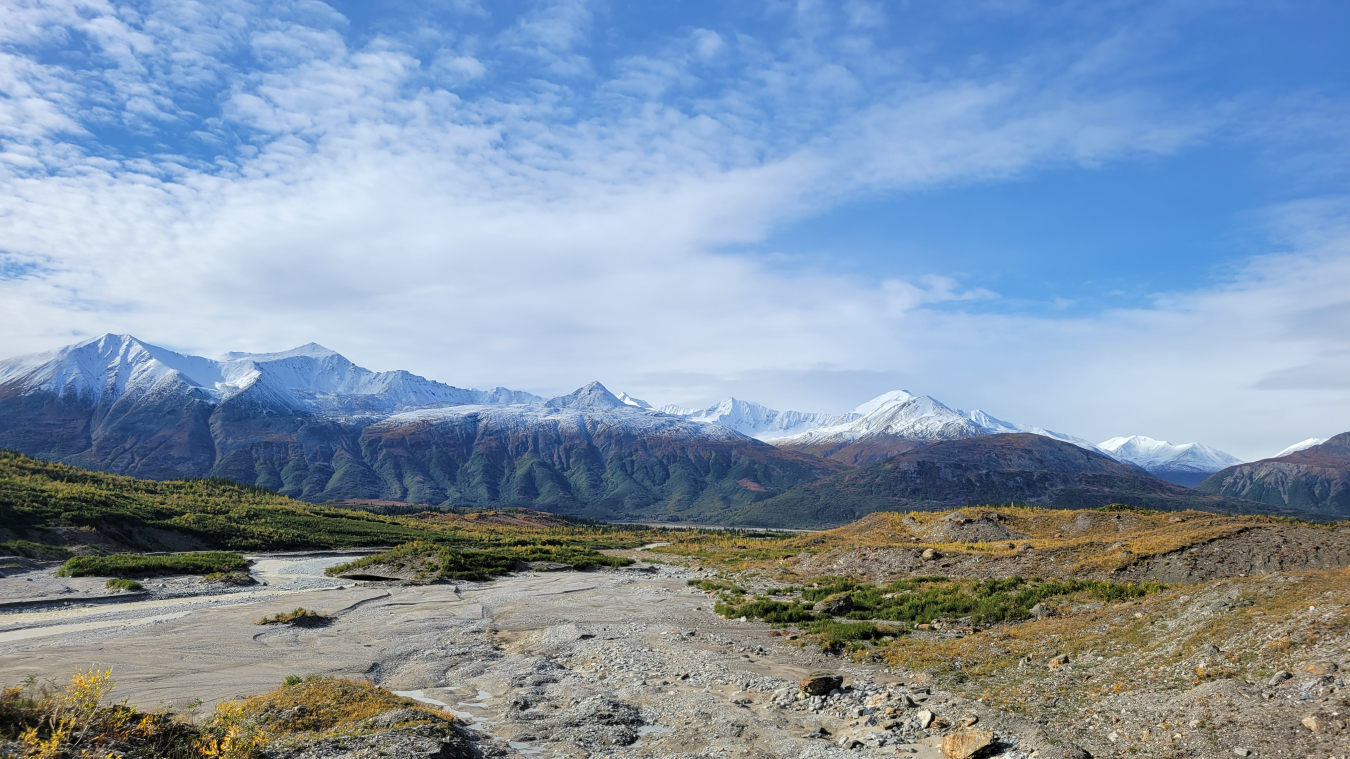Meet Nick Palso, who went to college in Fairbanks and spent two summers doing his doctoral dissertation research in Alaska. Nick is now a senior project manager heading up a hydroelectric incentives program at the Grid Deployment Office.
March 16, 2024The Arctic Energy Office is hosting a series of interviews to highlight the lives and achievements of some of DOE’s outstanding employees with Arctic and Alaska connections. Today meet Nick Palso, who went to college in Fairbanks and spent two summers doing his doctoral dissertation research in Alaska. Nick is now a senior project manager heading up a hydroelectric incentives program at the Grid Deployment Office. If you're a Department of Energy employee and have Alaska connections or know someone at DOE who does, please connect at [email protected] so we can feature you in future editions.


Tell us about your experiences in the Arctic. What were some of your favorite memories from that time?
I went to college in Fairbanks. After graduation, I drove up to Fairbanks and back from Pennsylvania to pick up my belongings, and I fell in love with the endless open roads and views. I conducted my doctoral dissertation in the field of recreation studies, and focused on road trips. I interviewed people who had driven to Alaska for recreation to gather information for my research, which also enabled me more chances to drive to Alaska. In my trusty 2002 Subaru (which still runs and has over 250,000 miles), I covered nearly every single mile of the connected Alaskan road network. As I traveled around the state, I also regularly bumped into people who recognized me from my time at the University of Alaska Fairbanks (UAF). This drove home the fact that although Alaska is vast, it’s still a rather tight-knit place.
When did you live (or spend time) in Alaska?
I got my undergraduate degree in Wildlife Biology from the University of Alaska Fairbanks from 1997 through 2002. I then returned to Alaska for the summers of 2006 and 2007 to gather interviews for my doctoral dissertation in Recreation, Park, and Tourism Management from Penn State. I managed to get up above the Arctic Circle four times in Alaska (and once in Iceland), though only briefly.
What is your role at the Department of Energy and what drew you to this work?
I started with the Grid Deployment Office in 2024 after working over 14 years at the Federal Energy Regulatory Commission. I am a senior project manager heading up a hydroelectric incentives program. We are working on getting millions of dollars in federal funds out to hydroelectric facility operators that they will use to increase efficiency, improve dam safety, and make environmental improvements.
After spending 14 years working with hydropower regulation, I was interested in changing things up and working to promote and improve hydropower in the country. While I do miss focusing on individual hydropower projects and really getting into the weeds—oftentimes, literally—of their environmental impacts, I appreciate that I now have a broader and more far-reaching positive impact on the industry.

What do you love about your job?
I love having an impact on increasing and improving hydroelectricity production in the country. Hydropower is America’s original renewable energy, and I am having a direct effect on helping generation facilities — some of them over 100 years old — modernize and continue to operate well into the future.
How did your time in the Arctic shape who you are today?
I grew up in the suburbs of Pittsburgh and had never even been as far west than Cleveland when I decided to move to Alaska for college. I was prepared for how cold and dark it was going to be, but I wasn’t prepared for isolation of many communities and the beautiful vastness between them. It really changed my perspective on how big the world is. On another note, I believe my time in Alaska has left me utterly unable to abide D.C. summers.
How does your time in the Arctic impact your perspectives at DOE?
For over a century, Alaska has provided enormous quantities of both fuels and metals that have gone into the creation and powering of America’s energy grid. I’ve seen firsthand, however, that many communities in Alaska struggle with high electricity costs and reliability issues. DOE initiatives, such as the Hydroelectric Incentives Program, can help to alleviate these difficulties.
What’s your favorite place in the Arctic?
My favorite place in Alaska is along the stretch of the Richardson Highway that goes through the Alaska Range between Delta and Glennallen. It isn’t well known and doesn’t get much traffic because it is relatively out of the way and not a national park, but it rivals Denali for scenery and wildlife and is much more accessible. There are numerous, though poorly-marked, hikes in the area—including several that reach the countless glaciers in the area. If it wasn’t for occasional views of the pipeline, one might think they are in a fantasy world.
Anything else you want to add?
I spent a lot of time in Alaska when I was younger, but eventually life intervened and I reached the point where it had been 12 years since I had been back. However, DOE ended all that when I was sent to Anchorage to participate in a hydropower conference last fall. It was great to get back, and I’ll admit that I was emotional when I got off the plane.

